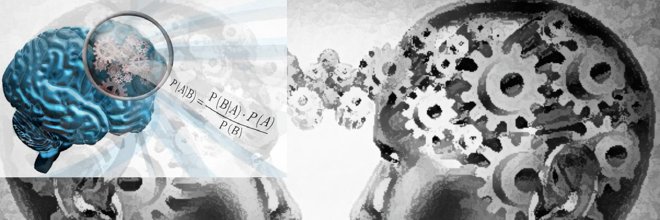
Andreea Diaconescu
@cognemo_andreea
Neuroscientist @CAMHResearch #KrembilNeuroinformatics. Interested in computational psychiatry, psychosis, models of delusions, former research fellow @tnuzurich
Currently looking for post-docs/PhD students with a background in computational neuroscience, computational behavioural modelling to work with me and CognitiveNetworkModelling team #KrembilNeuroinformatics @CAMHResearch. More information on our website cognemo.com.
A recently proposed «pseudosocial approach» aims at our work on the social dimension of paranoia. The shortcomings of the article raise important questions on how we all connect behavioural models to neural data. Our letter of response: osf.io/preprints/psya… summary 🧵👇
Pseudosocial cognition and paranoia Opinion by Philip Corlett, Julia M. Sheffield, Rosa Rossi-Goldthorpe, Praveen Suthaharan (@P_Suthaharan), Santiago Castiello de Obeso, & Cecilia Heyes (@CeliaHeyes) Free access before Aug 3: tinyurl.com/58s45ayj
Congratulations!
So I finally got my @SOBP travel award 🎉 I remember the feeling I had when I got award email for 2024, a mix of happiness and "ugh, not another US visa app" feeling. Funny enough, I applied and it is still processing 14 months later 😴 luckily the #SOBP2025 was in Toronto
New #SAMBAlab paper! @JosiDriessen used computational modelling and EEG to study how psychopathic traits are linked to learning what to choose when using social vs. reward information. w/@cognemo_andreea @D_Atanassova. @SSSpsychopathy @decisioncenter 👀👉rdcu.be/exNYf
Delighted to share our paper in @NatureComms showing a double dissociation between dynamic and static face perception. Enjoy 🧠 nature.com/articles/s4146…
I had the pleasure of presenting the amazing E2P Simulator at OHBM Hackathon in Brisbane 🇦🇺🦘 The time has come to step up our game in biomarker research and predictive modeling The time has come to make research more useful e2p-simulator.com
Just launched the E2P Simulator - an interactive open-source tool that translates effect sizes into predictive utility 🧠 Check it out here: e2p-simulator.com Many areas of research, such as biomedical, behavioral, educational, and sports sciences are studying individual…
A big day for bold ideas at U of T. We kicked off with Frontiers of AI—a boundary-pushing chat with Geoffrey Hinton, Nick Frosst (Cohere), and Nora Young (CBC)—then kept the momentum going at the U of T x Toronto Tech Week Lawn Party. Startups, sunshine, and serious innovation.
🚨 We’re hiring! Alberta Neuroscience is seeking a Lead (based anywhere in AB) to help drive the future of brain research & innovation. 🧠 Passionate about neuroscience + systems change? Apply by July 10! 🔗 lnkd.in/g8XQutM7
1/ Delighted to officially launch the 2025 BrainModes Conference 🔗 brainmodes2025.org 📅 October 8-10 📍 @FieldsInstitute , @UofT, Toronto Registration now open! All you need to know in the 🧵below👇: @BrainModes @OHBM @thevirtualbrain @CAMH_KCNI @CAMHResearch @SickKidsNews
Or we could fix the reproducibility crisis by simply using this amazing open-source tool that someone developed: e2p-simulator.com
There is an extraordinary "reproducibility crisis" in the sciences, particularly in biology, where most published papers fail to replicate. Most universities have massive bureaucracies that inhibit the translation of basic research into commercial adoption. The voting…
Come find me again at @SOBP today! If you are working on biomarker discovery or predictive modelling in mental health, I can explain why nothing is working and how to fix it! I will also introduce you to a newly developed open-source tool for predictive utility analysis - E2P…
Just launched the E2P Simulator - an interactive open-source tool that translates effect sizes into predictive utility 🧠 Check it out here: e2p-simulator.com Many areas of research, such as biomedical, behavioral, educational, and sports sciences are studying individual…
At #SOBP2025, Poster S321 reveals that a gamified aversive Go/NoGo task yields reliable reaction-time metrics mirroring active escape tendencies and the interplay of internalizing distress with externalizing antagonism. #SuicidePrevention @CAMH_KCNI
Check out Poster S258 at #SOBP2025 showing that reduced MMN and heightened model-based prediction errors link to schizotypy traits and hippocampal glutamate levels, offering new insights into early cortical excitability and psychosis vulnerability. @MiladSlt1 @CAMH_KCNI
More from the CogNeMo Lab: @KarvelisPovilas introduces a tool that converts effect sizes into clinical prediction metrics, revealing why small effects often fail and highlighting the need for stronger, more reliable predictors in psychiatry. Poster S87 at #SOBP2025 @CAMH_KCNI
More from the CogNeMo Lab at #SOBP2025: Neurocomputational modeling reveals cortical disinhibition during semantic processing in high risk for psychosis. Model-derived E/I imbalance forecasts social decline 1 year later. Poster F268 @CAMH_KCNI @CAMHResearch
Check out CogNeMo Lab presentations at #SOBP2025 today: Scalable, gamified tasks map psychosis spectrum symptoms to decision-making and social cognition Poster F254 @OgundipeOre @CAMH_KCNI Funded by @CIHR_IRSC
Check out the CogNeMo Lab at #SOBP2025 and Poster T335! Using computational fMRI, we identify distinct neural signatures of suicidal ideation vs. suicide attempts - putamen, insula, and brainstem activation patterns diverge. @CAMHResearch Funded by @afspnational
Can computational assays be both rigorous and scalable? Check out poster T113 by @KarvelisPovilas at #SOBP2025 in Toronto! We share psychometric results from a 4-task RDoC-aligned battery highlighting what works, what doesn’t, and what’s next. @CAMH_KCNI funded by @CIHR_IRSC